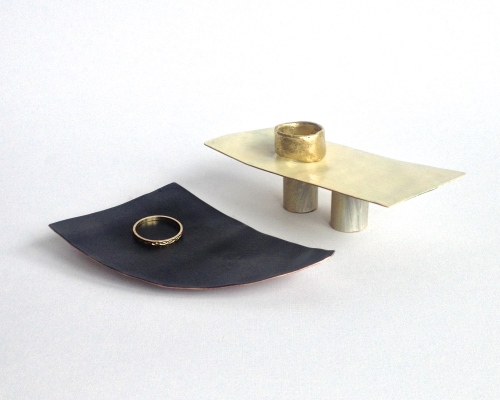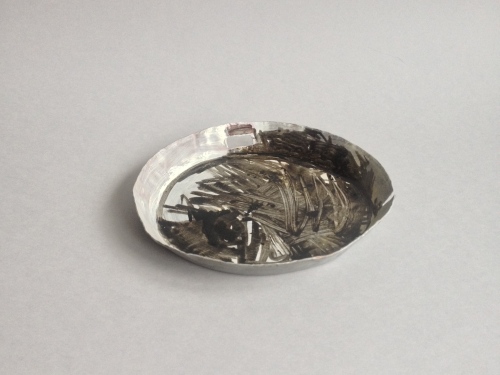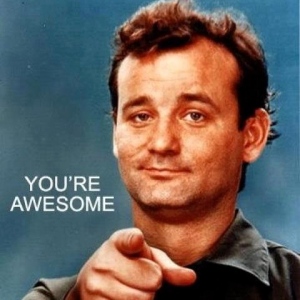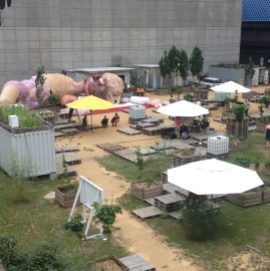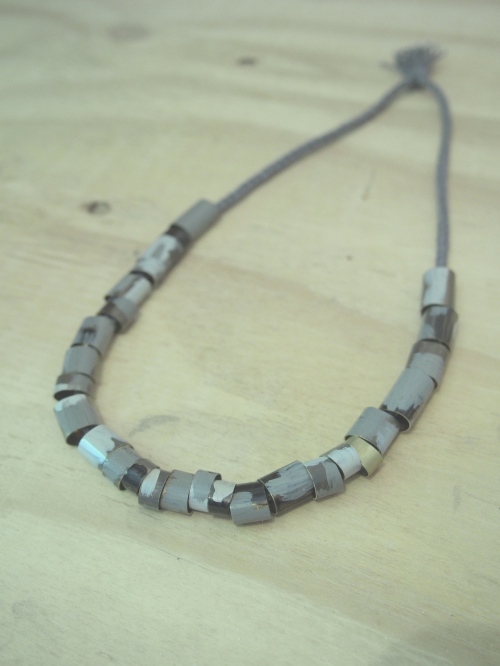-><-
As with any conclusion, the end of the Handshake project for me, feels just as much of an exciting beginning, as an end.
My attitude towards making has changed dramatically through conversations with David and I feel so grateful to now have an amazing resource to draw from in my future practice. I’m excited to continue to put into practise the wealth of knowledge picked up through my mentorship.
A huge, giant, massive THANK-YOU to;
My mentor David, for very generously sharing insights and lessons learnt along the way, with patience and humour.
Makers 101, Peter Deckers and Hilda Gascard, for brainstorming such an amazing project and for your tireless work and support.
And for the support of Creative New Zealand, fellow mentees and mentors and the wider arts community.

Buffed Vessel, 2016, copper, brass, thermo set paint.

Buffed Vessel, 2016, copper, brass, thermo set paint.

Buffed Vessel, 2016, copper, brass, thermo set paint.

Buffed Vessel, 2016, copper, brass, thermo set paint.
-><-
Pah Homestead Exhibition


Exhibition View
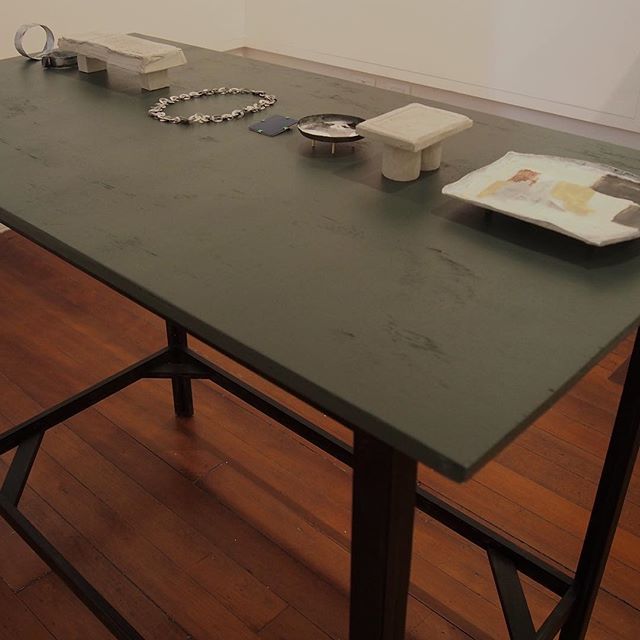
-><-
Biography of an object, material and place
‘The social, symbolic and economic meaning of an object is not static. It changes as the object moves from one context of use to another in the course of it’s life. In each new context, different groups of people move into new relationships with each other and with the object, thereby giving it new meaning.’
– Ancient repairs: Techniques and social meaning. Renske Dooijes and Olivier P. Nieuwenhuyse
During spring 2015, I was lucky enough to spend a month travelling around Europe.
In Florence, Italy I stumbled upon the National Archeological Museum and spent a full day exploring.
There were lot’s of interesting stories within the museums collection. Including this piece, a cameo fragment made in the hellenistic period, and then restored by Benvenuto Cellini, an Italian goldsmith/sculptor in the 1500’s.

Not knowing anything about Cellini, I was intrigued that he had taken the time to repair the broken piece and amazed at the time frame between the cameo being made and the broken piece being repaired.
David and I discuss this, and he queries Cellinis moativation to repair;
Was the goldsmith repairing it in a celebratory way, or showing off his mad skillz? I feel the ego somehow is strutting…
Cellini (not a good man, I cannot admire him) was very proud of his ability to chase figures in gold. – David
David also mentions the recent theft (and recovery) of Cellinis Salt Cellar – a rare gold-plated sculpture. The Kunsthistorisches Museum in Vienna, decided not to repair the damage it received during the 3 years it was missing, deeming it as a valuable part of the objects’ story.
Discovering this piece and other restored/recomposed objects within the museums collection made me realise the biography of the objects, materials and spaces we own and encounter, and how these evolve over time is what I’ve been aiming to explore in my own work.

Museum repairs and reformed objects – some were super dodgy, with glue oozing out all over the place! (no Japanese approach here!)

Ancient everyday objects – National Archeological Museum, Italy.

Dented pin – National Archeological Museum, Italy.
Locally, I’ve always been interested in the story of New Zealand diver Kelly Tarltons jewel haul. He spent much of the 1970’s diving in extremely dangerous situations to recover shipwreck jewels and coins off the coast of New Zealand.
One ship in particular had an English jewellers son on board (who was heading to New Zealand to sell his fathers work), the ship wrecked off the coast of Gisborne in 1897.
The son survived and ended up buying the rights to the wreck (obviously at that time there was no means of recovering it with the wreck being so deep. Although he did come up with a plan involving 2000 balloons)
Tarlton brought the rights from the Rothschild family in the 1970’s, and eventually recovered most of the jewellery. It was then displayed in Tarlton’s museum (attached to the Auckland aquarium he founded) until 2000, when one of his employees disappeared, along with the collection….rumoured to now be in the hands of gangs or have been sent overseas.

Kelly Tarlton – image: Dominion Post
So who knows, maybe the haul has been melted down and is now in a totally different form. And despite all the effort in making, and then recovering it, it’s never been used for it’s intended purpose/context (at least for the first 100 years).
Another point of view on object biography and repair;
The Ideal State of an Object – Image and words by Jan Chipchase.

‘The stuff you do to retain the ideal state of an object – that sweet spot of use. And the motivations for keeping an object in that state?
This photo shows mobile phone polishing services in Kabul’s thriving Titanic mobile phone market: newness & implications of wealth; retaining or preparing objects for resale value; removing scratches that (potentially) make the screen easier to read; implications around modernity; a psychological sense of wholeness, completion, cleanliness?
Lay everyfactor on a scale and figure out the opposite – for example allowing a device to become scratched up and unusable, showing you can afford a new one or are wealthy enough not to care. How the motivations differ for every person, culture, context. The ability of an object or service to actively maintain or suggest (to the user and others) that ideal state.’ – Jan Chipchase
And on material biography;
Ernesto Oroza, a Cuban artist has spent many years documenting improvised architecture and objects made by the Cuban people.
He discusses that because of the restrictions in place for so long in Cuba, and lack of products and money available, the Cuban people seem to have developed a different mentality and way of seeing materials and objects. They will see many potential uses, and come up with ingenious repairs, techniques and adjustments using whatever they can get their hands on. Something Oroza describes as; Technological disobedience & the architecture or objects of necessity.
These include but are not limited to jewellery, homewares, appliances, transportation and furniture. Eventually underground instructional manuals were also printed, with directions on the various techniques and ways to utilise everyday materials.

Homemade cups and jugs, made by mixing plastics from various sources, Cuba. Architecture of Necessity. Ernesto Oroza.

Technological Disobedience, homemade Cuban objects – Ernesto Oroza

Technological disobedience, homemade Cuban objects, Ernesto Oroza.
Biography of a space;

The marble entrance to a church, worn in dip from 800 years of feet coming and going, Monterosso, Italy.

Kev, Wellington. Image 2012

Buffed Wall. Image; graffitiremovals.org
-><-
The National – Rings


Rings, 2015, 925 silver, fine silver, brass, 9ct gold.

Buffed Tray, 2015, copper, fine silver, 925 silver, thermo set paint.
-><-
Overview – Bench View
Below, a few words from me, recently included in The jewellers Guild of Greater Sandringhams publication Overview edition 24;
My workshop set up is an on going process. Organising & reorganising, as I discover which works best with my making process. The space is a sliver of a room, wedged between two rooms, in our ‘new’ 101 year old house in the sunny Hawke’s Bay. I share the workshop with my Boarder Collie Maanu and street smart tabby Murray. They’re pretty good workmates, but terrible at making coffee.
Recently I’ve been trying to implement a more streamlined system, starting with a physical spring clean. Ripping out the blue carpet nightmare that made me grumpy (and my chair glide less easily)…passing on materials that no longer spark my interest and organising a physical method to the madness, with the intention of it translating into a more effective making system.
Workspace streamlining has also been a topic of discussion with my Handshake mentor, David Neale.
‘Workshop tip:
Order is peace.
The flow of energy through a system acts to organise that system. I’m not talking about Feng Shui, by energy I mean your effective activity. I think one’s workshop is part of one’s oeuvre.’
-David
Next on the list, find a spot for the dog, so he doesn’t get an accidental mandrel to the noggin…and buff out the ‘fish and chip shop pink’ walls to provide a more fitting backdrop to my work.
The jewellers work(shop) is never done.


-><-
Mentors and Mentees Exhibition, Avid Gallery, Wellington



David Neale, Colour Fold Brooches, 2015.


Vanessa Arthur, Buffed Ring Tray, 2015, aluminium, fine silver, 925 silver, thermo set paint, 200 x 200 x 10mm
-><-
Jewellers’ International Handshake, Radio New Zealand
Originally aired on Standing Room Only, Radio New Zealand, Sunday 13 September 2015. David and I discuss the Handshake project with Lynn Freeman.
For almost two years, 11 emerging New Zealand contemporary jewellers have been mentored by big international names in jewellery. Now the work of mentors and mentees is being shown side by side for the first time. The Handshake project paired the Kiwi jewellers with their heros at the start of last year. They’ve collaborated using online video and email. So how did it work? Mentor David Neale from Melbourne, Australia, and Hastings jeweller Vanessa Arthur talk about their collaboration. Mentors & Mentees, is on at AVID Gallery in Wellington.
-><-
R.A.W Exhibition at Wunderweek
A selection of jewellery vessels exhibited recently as part of Wunderweek in Auckland.
Double ring tray – copper, 925 silver, thermo set paint, 2015.
Fragment ring holders – copper, brass, 925 silver, thermo set paint, 2015
Fragment ring holder – copper, 925 silver, thermo set paint, 2015.

The flip side – jewellery vessels, 2015
Ring slab – concrete, porcelain, 2015.
Jewellery tray – copper, thermo set paint, 2015
Jewellery tray – brass, copper, thermo set paint, 925 silver, 2015.
-><-
Self imposed studio exile
I let David know of my recent interest in the presentations of hoards and treasure troves. He gives me a friendly reminder that in order to display a hoard you need to have a hoard of work to display…hmmm…good point. I’m going to be busy!
We also discuss the pro’s and con’s of internet scrolling, ‘research’ and info overload – something that can become quite consuming and easily distract me (and I’m sure most makers) from making.
While I am your mentor, I would recommend less reading and more making.
Less world, more Vanessa.
We crave inspiration but;
Be Boring, make 10 or 20 of the same thing again.
This sounds flippant, but I’m earnest. DN
David also questions what I would make if I was stranded on an island alone, with only myself as the audience.
Sooo I’ve banished myself from the computer/world (apart from this post) and have locked myself in the studio re-making pieces, assembling a hoard – currently in the form of vessels to hold jewels.
And…I’m having a great time!
Working in a larger scale is fun and I’m making discoveries through these larger pieces I can see translating back into my jewellery work.

Experiments
-><-
Sweding and the art of improvisation
The subject of originality/authenticity has popped up in conversations between David and I since the start of the project. Early on David introduced me to the idea of “sweding” things and suggests checking out Gondry’s movie ‘Be Kind Rewind’.
Sweding is the art of recreating blockbuster movies from scratch using the materials, people and resources immediately available to you.
How to swede:
take some things you like
mix them with other things you like
and make a new thing.
Your thing
It’s putting ‘you’ into the thing you like – Jack Black
Sweded Pacific Rim set design, Dumb Drum.
With the goal of strengthening my own making voice and as a jeweller starting out with often limited tools, materials and funds. It’s a good reminder to look for my own possible improvisations rather than to seek out solutions elsewhere.
Homemade pool table, Garoua, Cameroon. Image – Hal Carim
Reinvented objects. Image – Ernesto Oroza
Home made tools, Rwanda. Image – Tom Ritchey
Panama street bike, customised using materials at hand. Image – Jose Castrellon
Viking Ice Skates, The Swedish History Museum. Bone fastened with leather straps under the soles, enabled the wearer to slide forward on the ice.
-><-
More is More
In preparation for the upcoming HS exhibition in Sydney, David suggests focusing on re-making pieces I’ve been working on rather than adding to the mix with completely new ideas….to broaden. To make twenty or more of a piece and see what happens. I can see this method of making (not my usual M.O) already pushing my work along.
It also fit’s in nicely with my recent fascination with images and the display of hoards and treasure troves. I can see parallels between these and the groupings of fragments or objects found in streetscapes which influence much of my work. They both have a mystery to them. Questions of who owned them, why they came to be where they are found, in some cases questions of the pieces purpose or function. Just as I would scan as I’m walking, I also enjoy scanning these images and discovering/uncovering the various objects and fragments.
Varna golden treasure (6th – 5th millenia BC)
Snettisham Hoard
The Cuerdale hoard
A Jeweller’s hoard from Snettisham, Roman Britain, that was buried around AD 155 and contained scrap silver, ingots, scrap gold, a quartz burnishing tool, 117 engraved gems and 110 coins
-><-
The Pearl Show
A pearly group exhibition I’m currently part of, showing at Masterworks Gallery in Auckland until the 27th May. Masterworks invited twelve contemporary New Zealand jewellers to use pearls as a material or starting point for this exhibition. See my pieces below or view a selection of works at Klimt02.
Bracelet: 2015 – Copper, thermo paint, fine silver ‘Pearl’
Earrings: 2015 – Brass, 925 silver, polymer clay, thermo paint, thread.
Pendant: 2015 – polymer clay, thread.
-><-
Jewel camp 2015
After a slightly extended summer break, our second year in the HS project kicked off in Feburary with a jewel camp in Wellington. A chance for all the mentees to meet and discuss the project thus far, followed by a week long workshop with Paris based Benjamin Lignel – designer, jeweller, writer and editor of Art Jewelry Forum.
Some of the questions we asked ourselves during the week;
– How do we collect/access information? what tools could we use in refining this process?
– What are the fundamental idea’s/themes/signatures in our work? – the difference between a theme throughout your work and a project…e.g themes are continuous a project will have a conclusion.
– What is our visual language?
– How do we edit? how do we know what works and what doesn’t? are you trying to fit your finished piece into your question or theme while denying it’s qualities? Is this piece of jewellery the next question?
We each give a 3 minute pitch of a piece of our work, I pitch using my scratched signet ring:
‘The starting point for this piece came from my time working, selling jewellery. Customers would occasionally come in with a piece of jewellery that was marked through wear or had a small scratch (which naturally happens over time) and want the piece revived back to the condition of the day they purchased it.
I become interested in how we relate to the passage of time in the products or the objects we own. By either buying a pre-added history or by trying to erase all signs of it (through constant replacement or other means)
Pre-distressed Converse Chuck Taylor All Star – Well Worn Collection
In response I made a signet ring. As scratched as possible. Although unlike other pre-worn products, over time the lines and scratches will start to smooth and disappear, the metal become more vibrant. The signet marking will slowly wear down to a faint trace or eventually become totally unreadable. I’m interested in further investigations of this idea.
In pairs we give a cold reading of another piece of mentees work: what does it look like? what does it evoke? how does it interact with the body? what does it do? who do you imagine wearing it.
We also look at the spaces jewellery inhabits; body, page, bench, street, drawer, screen. And envision the best possible encounters between our jewellery and it’s audience/wearers.
Ben shows us a video, a panel of judges choosing the 2013 National Geographic photo of the year winner.
Aside from the judges talking about each other, some interesting conversation on the editing process which could easily be applied to many different practises.
Ben’s workshop was really helpful in re-assessing our work, and providing tools or possible ways of refining our making process from start to finish. Working by yourself in the studio means not having to explain your process very often, so it was a great exercise. I found stepping back and trying to objectively assess my work and practice during the week extremely helpful.
We also managed to squeeze in a fundraising pin swap, a lecture by german jeweller Peter Bauhuis, an exhibition opening, and a glass of wine or two during our week in the city. A great start to 2015 and our second year in the Handshake project!
-><-
One year in
One year in and the HS program has proved to be one giant, much-needed pep talk. Having a fresh voice and mentor to bounce ideas, thoughts and queries off has helped set me on a productive path again and reminded me of my aims and reasons for making jewellery in the first place. Go team go!
At times during the year, I’ve felt like this…
At other times more like this…
At the start of the project David made initial observations on my work: although from the outset let’s me know he doesn’t see his mentor role as giving me direct aesthetic advice. Rather a broader conversation on the making process, and all aspects of being a jeweller.
Discoveries and breakthroughs for me last year through the mentorship, were more in my approach to making – to tighten the gap between doing and thinking, learning to forget about the voices on my shoulder and trying to refine the questions I am asking in my practise.
Scratched signet ring, 2014, 925 silver oxidised
I was here brooch, 2014, polymer clay, brass, 925 silver, thermo hardened paint
Scratched ring, 2014, 925 silver, 9ct gold
My aims for the second year of this project are; to continue to try to refine a more productive way of working, to focus more on my making processes (actually doing rather than thinking about ideas for work). To make more prolifically and to continue to strengthen my personal making voice.
-><-
Melbourne travelling
At the start of December I was lucky enough to visit Melbourne for a week and meet with David. It was great being able to talk in person, rather than in Skype land! We had a catch up over lunch, a look around RMIT and checked out the post grad exhibitions.
Half of us/half of George, his horse, the dragon.
Visiting Gallery Funaki was a highlight, seeing lots of jewels I’ve swooned at in books in the real. Other highlights were: The National Gallery of Victoria, the amazing food!, Pieces of Eight Gallery featuring Lucas Grogan’s work, Craft Victoria, the food, the annual Melbourne Design Fair, catching up with fellow HS’er Amelia Pascoe and jeweller Soph Laurs, the Hellenic Museum’s ’God’s, Myths and mortals’ exhibition at the old Melbourne Mint… and also the food!
-><-
Hindsight Musings
An excerpt from a 2014 interview with David, by Craft Curator Debbie Pryor – as part of the 20th anniversary of the Fresh! exhibition:
If you were to give David Neale advice as he entered the world of craft in 2003 what would be your pearls of wisdom now?
Advice to my younger self (still trying to apply all of this):
– Safety First. Lung operations are painful and distressing!
– Do the Math. Be mindful of money and business. How many earrings will you need to sell in order to survive? … to or prosper?(!)
– Let limitations be your design brief. Do what you can with what you have. So what if you dont have fancy tools?- the Etruscans didn’t, and their goldsmithing is unsurpassed.
– Creative Professionals are Entertainers You are giving people an experience, not just a product.
– Photograph everything you make. So much DN work that was undocumented!
– Ideas are easy – so focus more on MAKING them real. “Internet research” feels very productive but it is a Time Vortex.
– Balance innovation with repetition. Your audience isn’t ready yet for what you are making now – don’t get discouraged, just wait 5 years and everyone will be doing the same thing.
And when the copycats start to bug you, don’t get spooked – hold on to your ideas just a bit longer – stick around, and get paid for being a trailblazer.
– You Are The Artist. Seek and apply professional/practical advice, but aesthetic advice will trip you up every time; it’s not a committee. Instead, strengthen your personal ‘voice’.
My aim for 2015 focus on the making! Read the full interview here on the Craft website. – VA
-><-
Paint and surface trialling
Initial surface samples in response to my recent street walkabout images… DN – more texture needed!
Recent street walkabout photos, surfaces, unintentional collaboration.
-><-
The surface of things
David suggests a discussion on the surface of things; paint/painting, surface as a site for interactions, coatings, and borders. His knowledge of painting/paint history is broad, mine not so much! I often use colour in my work to represent various periods in time, to explore unintentional meetings of colour in streetscapes. Aside from this I haven’t even scratched the surface of colour use and have a lot to explore!
David suggests reading, ‘Chromophobia’ David Batchelor’s essay/book about our historic mistrust of colour, that paint/colour is somehow deceitful and covers the truth, that it creates illusions and tricks us. I’ve started by reading excerpts while I wait for my copy to arrive. Really interesting questions and discussions on how we view and value colour in western culture. I also discovered a review on Artnet that mentions colour rhyming moments in everyday life, a game I find myself playing often. It made me think of our earlier conversation on Jünger’s brooch/material rhymes.
‘Urban life is filled with “color rhyming” moments; you walk down the street and a yellow truck appears in your frame of vision just as a man in a yellow jacket turns into view and suddenly you feel the ineffable.’ Joe Fyfe, artnet.com
DN also suggests looking at Spanish painter Antoni Tàpies work…
Antoni Tàpies, Ecriture sur le mur, 1971 Graffiti on the Wall, Mixed media on canvas, 270 x 200 cm. Photo: Robert Bayer, Basel
Antoni Tàpies, Fragments, 1995.
Antoni Tàpies, Verticales en bas, 1968
Tàpies would build up a base for his work by mixing paint with clay, marble dust and other materials and then scratch, carve, mark and paint on top. I’m really enjoying studying his paintings/surface’s.
We also discuss; Paint as a material to itself
Sally Marsland 10 cups: Edition für Galerie so, 2005 Polyurethan, Ø 8,5 cm
And finally issues around paint on jewellery; longevity, wearability, and wearers/collectors expectations on permanence. More on that soon.
-><-
Party out back
During our first conversation David mentions my tendency to hide less self conscious (more interesting/appealing) making on the back of my work. He suggests experimenting with reversing my usual making process.
I’ve started re-visiting past work, leaving any findings off, considering the front the front until the very end and then flipping things around. It’s been quite challenging not falling back into my ‘hiding the party out the back’ habits!
What I would usually use as ‘the front’…
What I would usually hide on the back…
We also discuss: Why jewellery?! The role of jewellery. How living away from the city environment will influence my practice. Originality and my fears of making work which has been done before, is too influenced by others work/ideas. David talks about not getting caught up in novelty, rather to focus on quality of form/work & gives an example of musicians/singers: although they may sing the same song, each has a voice that is distinctive and unique. To work on strengthening your making voice, work that is recognisably yours and has a you-ness to it.
We both show current experiments in progress. David: stone he’s shaping. Me: steel I’ve been forming and painting. David jokes that I’m not very ‘Bone Stone Shell’ and we discuss how the language of NZ jewellery can be quite foreign even in Australia. I send David a catalogue from the recent ‘Wunderrūma: New Zealand Jewellery‘ exhibition in Munich and Wellington.
David suggests I become more familiar with Herman Jünger’s work/books. We discuss Jünger brooch/material rhymes, much of which I can view on The Goldensmith Pinterest board here. David also suggests investigating Robert Smit’s work as I’m currently painting on metal. I’m feeling refreshed. Lot’s of making, exploring and reading to continue with until our next conversation!
-><-
I discovered the work of Australian jeweller David Neale in 2013. His colour fold brooches caught my attention. Thin silver sheet folded and painted, some with ground stone: marble, lapis lazuli and turquoise. I was drawn to their colour and gestural quality, they represented a balance and feeling I aspired to achieve in my own work.



David Neale – Colour Fold series, 2006 – 2010
I began following Davids musings on his blog ‘The Goldensmith’ and started a conversation of sorts. His writing sometimes just one or two lines (often more) accompanied by connecting visual threads, discussed many of the topics and questions on my mind. At time’s when frustrated and my work stalled, his words have served as refreshing, witty, and honest pearls of wisdom, to consider or apply to my own making.
The quality of directness in Davids work which first drew me in, is one of the on-going frustrations in my own making process. Figuring out when to stop before a piece becomes bogged down and heavy, through trying to solve wearability, master a technique or translate an idea into material form.
David writes in a Goldensmith entry :
 “Somehow something dies when one ‘works’ a piece too much. Sometimes lively ideas get rolled, sanded and polished away by too much process. I fear that in metalwork, this happens more than with other media. There are so many techniques to master, to learn, to use. You know what I mean, dont you?- we’ve all lost that intangible ‘something’ at some time, by trying too hard. I try to let go- to just ‘do stuff’ with the material, without freezing my ability with anxiety (expensive material can really make you afraid of failure!). The above brooch was made as immediately as I could; roughly ingotted gold, rolled thick, design snipped out just quickly with scissors and blobbily soldered together. Details stamped. Done. It felt really good. The motif is a bolting horse- and a hand on the reins; the balance between letting it go / pulling it in; its what you have to do in the creative process, I reckon.”
“Somehow something dies when one ‘works’ a piece too much. Sometimes lively ideas get rolled, sanded and polished away by too much process. I fear that in metalwork, this happens more than with other media. There are so many techniques to master, to learn, to use. You know what I mean, dont you?- we’ve all lost that intangible ‘something’ at some time, by trying too hard. I try to let go- to just ‘do stuff’ with the material, without freezing my ability with anxiety (expensive material can really make you afraid of failure!). The above brooch was made as immediately as I could; roughly ingotted gold, rolled thick, design snipped out just quickly with scissors and blobbily soldered together. Details stamped. Done. It felt really good. The motif is a bolting horse- and a hand on the reins; the balance between letting it go / pulling it in; its what you have to do in the creative process, I reckon.”
I’m looking forward to continuing my conversation with David, seeing where the discussion takes us. Lately in the workshop, keeping the above Goldensmith post in mind, I’ve just been ‘doing stuff’. Not letting myself become stuck on any one piece for too long, quick material sketches, trying to keep things lively!
-><-





